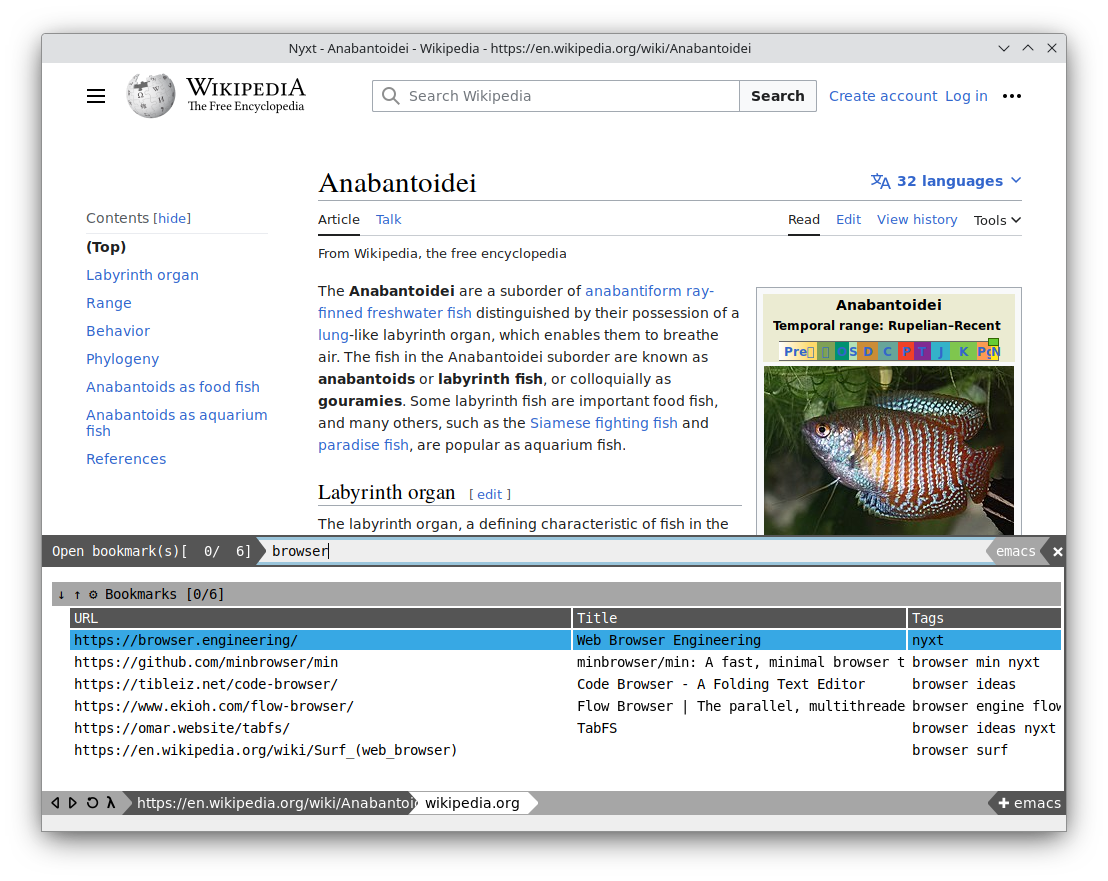Next is a keyboard-oriented, extensible web-browser designed for power users. It has familiar key-bindings (Emacs, VI, CUA), is fully configurable and extensible in Lisp, and has powerful features for productive professionals.
If you like Next and if you want to help future development, please support us on Patreon or give us a star, thank you!
Warning: Next is under active development. Feel free to report bugs, instabilities or feature wishes.
Switch easily between your open tabs via fuzzy search. If you are
looking for https://www.example.com, you could type in ele, exa,
epl, or any other matching series of letters.
Commands can accept multiple inputs, allowing you to quickly perform an operation against multiple objects. In the example below we search for penguins, and only open up links that have the text “animal” within them.
Bookmark a page with tags. Search bookmarks with compound queries. Capture more data about your bookmarks, and group and wrangle them in any way you like.
Search multiple tabs at the same time, and view all the results in a single window. Jump quickly through your open tabs to find what you need.
History is represented as a tree that you can traverse. smarter than the “forwards-backwards” abstraction found in other browsers, the tree makes sure you never lose track of where you’ve been.
For a complete list of features, please see the manual.
Next supports GNU/Linux, macOS, and Guix with engine support for WebKit and WebEngine/Blink.
Please see the downloads page for pre-built binaries. Some operating systems provide packages for Next:
- Alpine
- Debian and derivatives (Ubuntu, LinuxMint), for Debian >= 10 (Buster).
- MacPorts
- Arch Linux AUR (and the -git PKGBUILD)
- Nix: Install with
nix-env --install next. - Guix: Install with
guix install next.
To perform an installation from source, please see the developer readme.
For full documentation about Next, how it works, and how to extend it please see the MANUAL.org.
If you want to help with development or build Next from scratch, read the developer’s documentation at documents/README.org.
Complete customization is possible through the creation of a
~/.config/next/init.lisp file. For more information please see:
“Customizing Next” within the MANUAL.org.
Additionally, a document provided in the documents directory named EXTENSION.org is a place for the community to share helpful customizations. To share your own extension, please make a pull request with your new extension appended to EXTENSION.org.
Please see the CHANGELOG.org.





